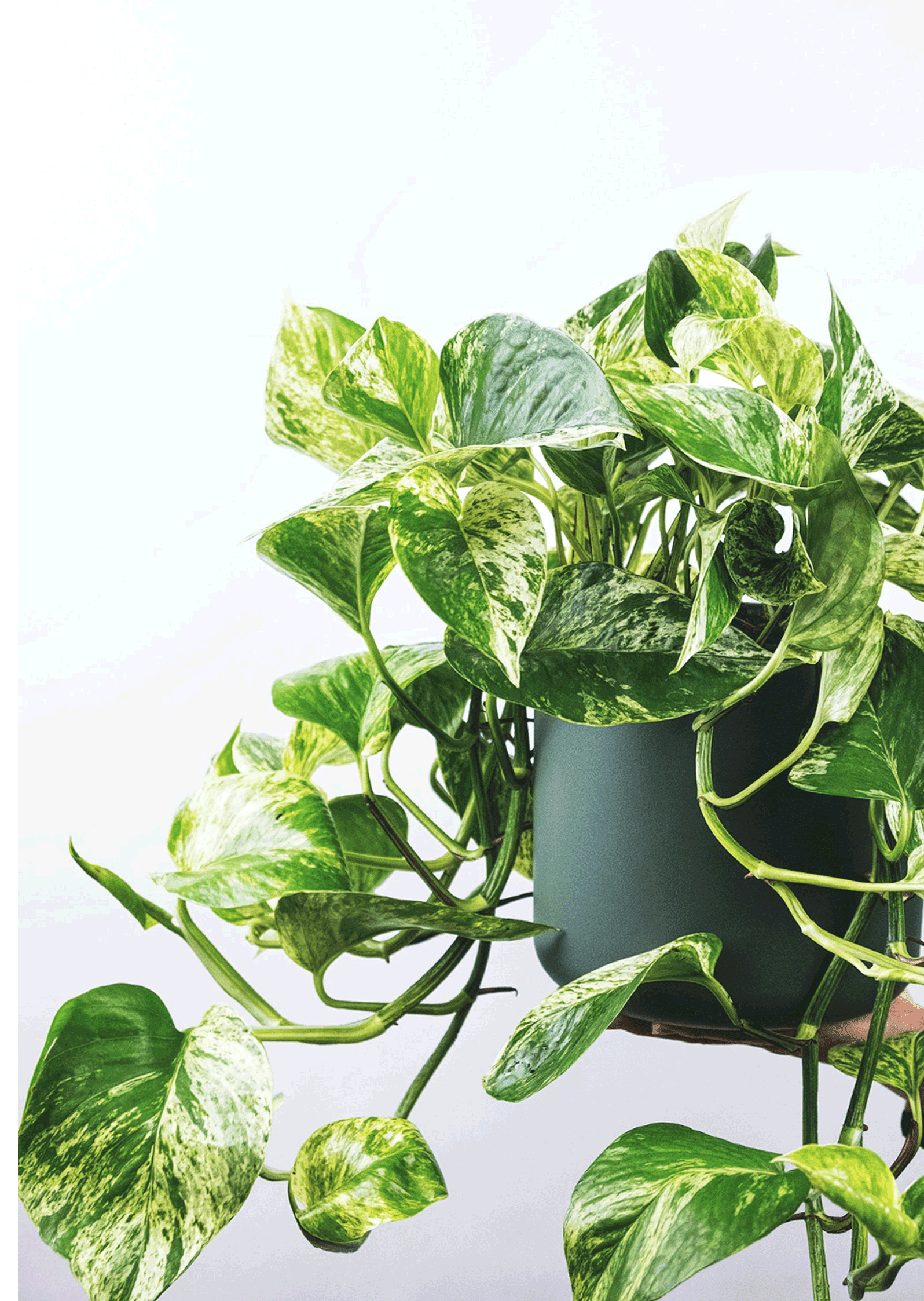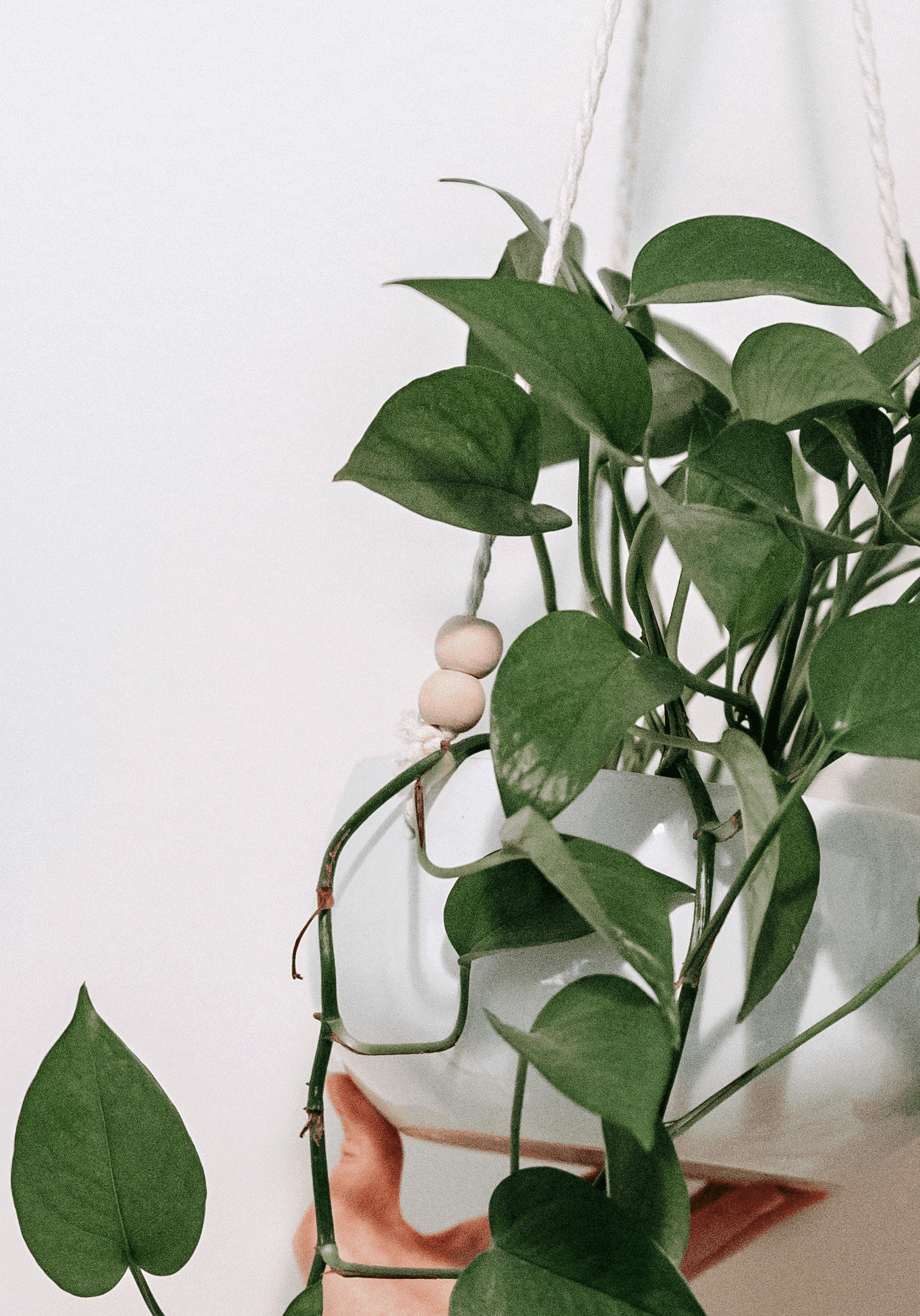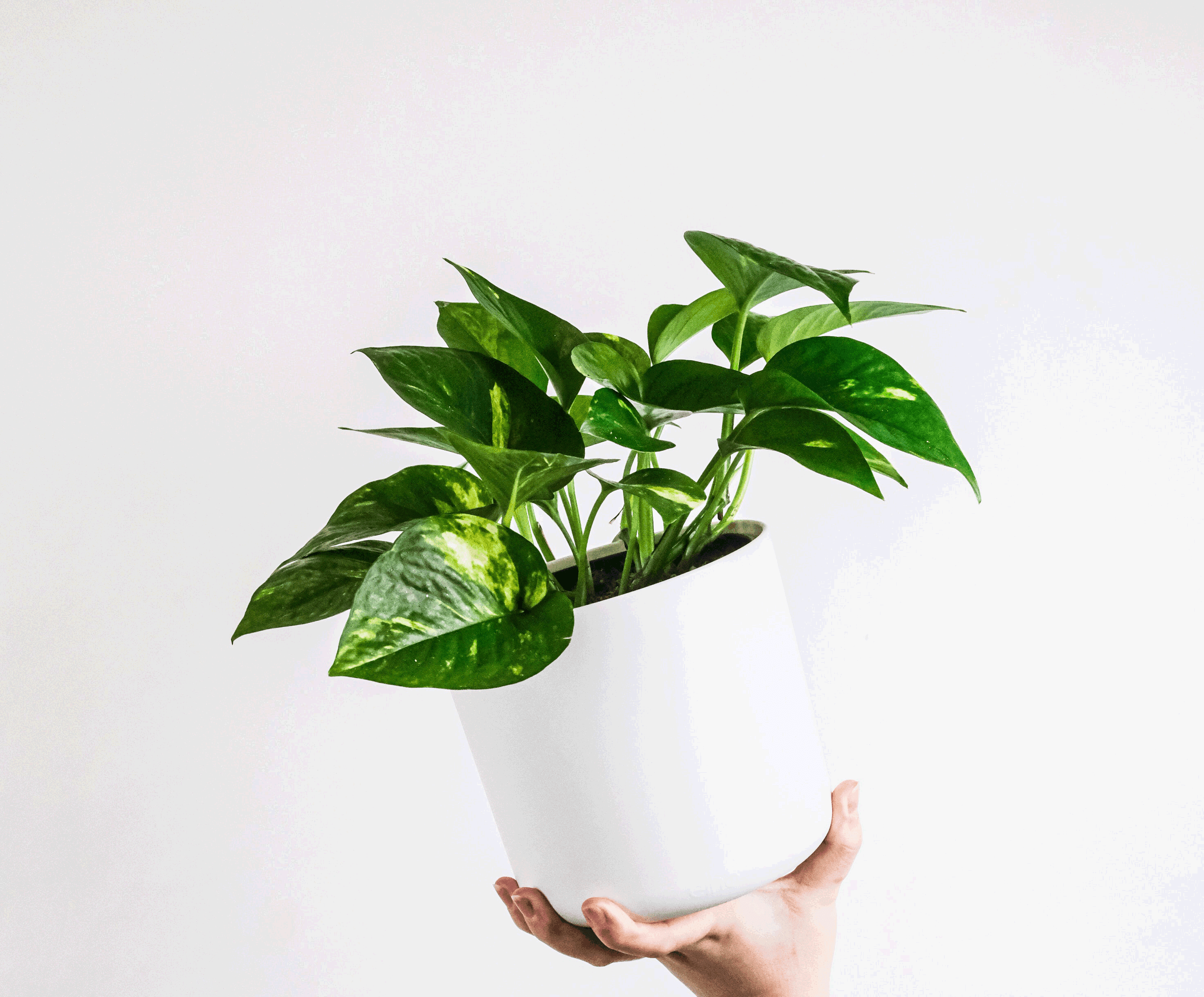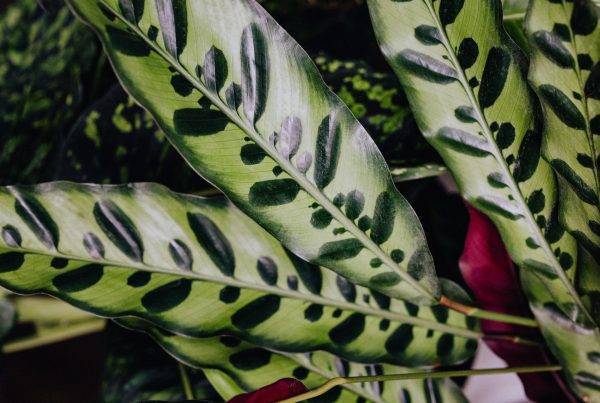Epipremnum Aureum / Pothos / Devil’s Ivy
Pothos is one of those hard to kill, easy going houseplants that are fantastic for beginners and enthusiasts alike.This is a beautiful plant comes in numerous varieties and is very versatile! It can be trained up a moss pole or allowed to trail. It is an epiphytic plant which means in its native habitat it will attach itself to larger trees for support, it also grows aerial roots from its stems to help attach itself to trees, these aerial roots are able to absorb moisture and nutrients from their environment. Scindapsus share the common name Pothos however they are different a different genus. They’re care requirements and appearance are very similar and the main difference being that scindapsus have one ovule in each ovary while epipremnum have a few. Today we will be looking at Epipremnum aurem.
Top Tip if you want larger leaves on your pothos grow it on a moss pole, this will mimic its natural habitat which will encourage those beautiful big leaves.
| Varieties | Water | Light | Humidity | Temp | Food | Flowers | Soil | Problems | Repot | Propagation | Toxicity |
Pothos Varieties
Golden Pothos is the most commonly found variety. It comes in many different shapes and forms, all of which are quite beautiful and also easy to care for! Here are some of the available varieties

Water
The top 50% of soil should be allowed to dry out before watering. Pothos likes to be on a schedule when it comes to watering however it will handle some neglect with grace! Over watering should be avoided as it doesn’t like wet feet.
Light
Pothos in its native habitat is an understory plant, as many common houseplants are, this means it grows under the canopy of larger trees and so Pothos thrives in bright indirect light. Pothos is very forgiving and will do fine in lower light conditions. The only lighting Pothos may not do well in is direct sun, this can scorch the leaves. Depending on the amount of direct sun, a few hours in the morning can benefit the plant. If it is getting direct sun watch out brown patches on the leaves, these indicate too much sun and you should consider moving your plant.

Variegated varieties may lose their variegation in lower light conditions, keeping them in brighter locations will help to maintain their variegation.
Humidity
Pothos aren’t very picky and will do fine to average household humidity. But they do love humidity. Their aerial roots can absorb moisture from the air. If you can provide them with a little extra they will appreciate it!
Temperature
They thrive in temperatures between 22-32 degrees. Perfect for average household temperatures.
Food
Pothos are not very heavy feeders. They will benefit from a monthly feed while they are actively growing.


Pothos Flowers
Its flowers are comprised of a spathe and spadix, similar to that of a Peace Lily. They only flower when they have reached maturity. Pothos rarely reaches maturity indoors and if it does is unlikely to produce flowers in indoor conditions!
Did You Know? In its mature form it has fenestrations (splits in the leaves) similar to those on a monstera.
Soil
Pothos likes a well draining soil. Though they are not picky about much they do not like to be sitting in wet soil. So adding a good amount of perlite to your potting soil can help to provide the drainage they need.
Pothos Problems
Many common symptoms of problems can have different causes and so some detective work is in order!
Pothos are prone to Mealybugs and Scale.
Leggy Growth (a lot of space in between leaves) too little light.
Wilting/Curling Leaves under watering.
Yellow Leaves can indicate over or under watering, temperature fluctuations, under feeding, too little or too much light.
Black spots on leaves overwatering, root rot, low temperatures.
Brown Patches on Leaves under or over watering, too much light, over feeding.
Repot
Pothos are fast growers and need repotting every 1-2 years. Once roots begin to come through the holes at the bottom of the pot, its time to repot. Repot into a pot no more than 1-2 sizes larger to avoid over watering.
Propagating Pothos
It is one of the easiest plants to propogate with a very high success rate. Pothos can be propagated and grown in water. Take a cutting about 4-5 inches long. Simply snip the stem just below a node (where the leaf meets the stem) at an angle, remove 1-2 lower leaves and place in water. Pothos can begin to show roots in as little as a week! Change the water every few days. If you want to continue growing in water, add a little liquid plant food every now and then! It can also be potted up when the roots are about an inch long, if you wait too long, the roots may struggle to adjust to potting soil.
It can be propagated directly into the soil. Follow the same steps above. Placing the cuttings into soil, ensure at least one node is below soil level. Keep potting soil moist until it has rooted. To find out if it has rooted, gently tug on a leaf if it has rooted it won’t want to come out! Once rooted you can begin to allow the soil dry out before watering.
Toxicity
Pothos contain calcium oxalate crystals which is an irritating toxin to both humans and pets when ingested. These crystals are insoluble and act as tiny shards of glass and can cause irritation of the mouth and GI tract. The reaction may vary from irritation of the lips, diarrhea, vomiting to difficulty breathing. If in doubt it is always best to contact your vet.
Happy Gardening!






Thanks for your blog, nice to read. Do not stop.